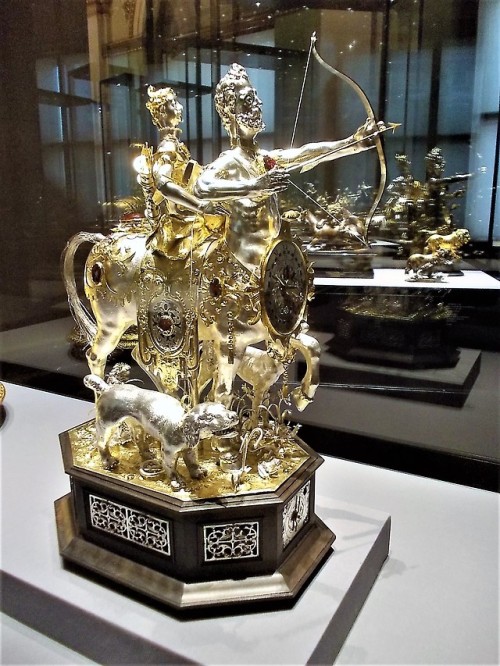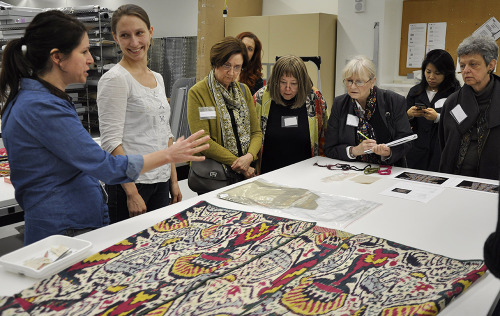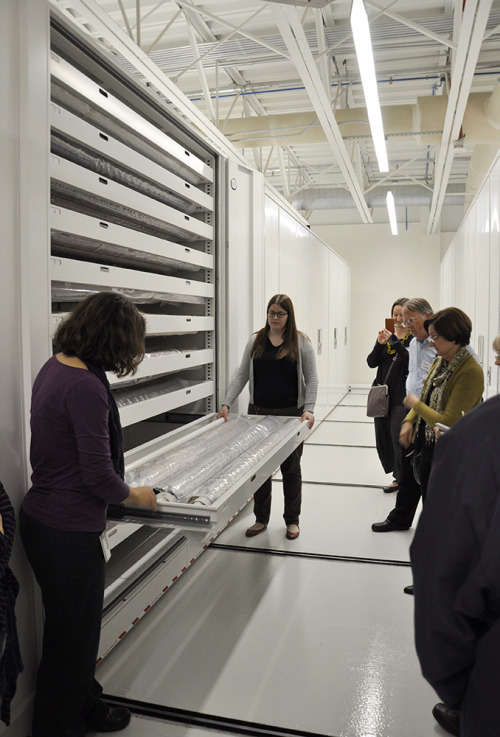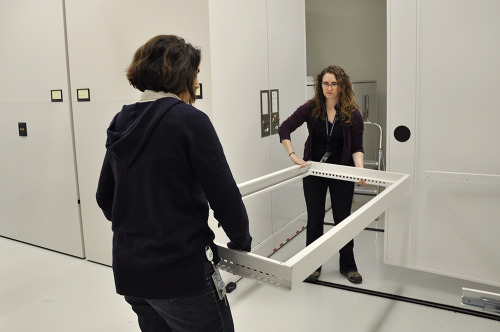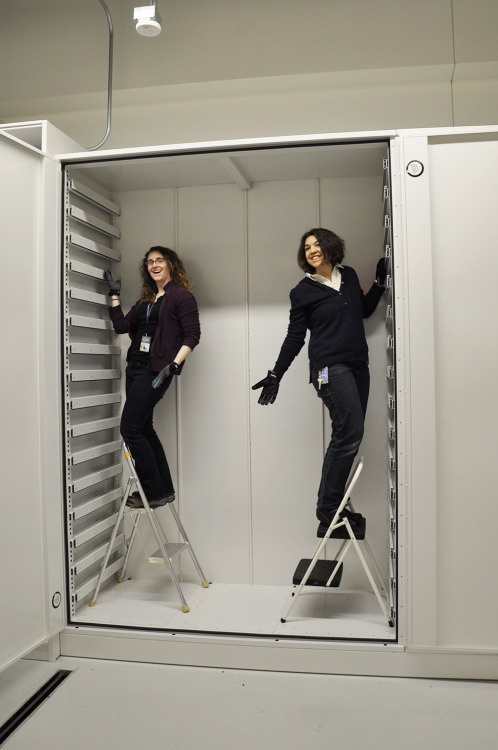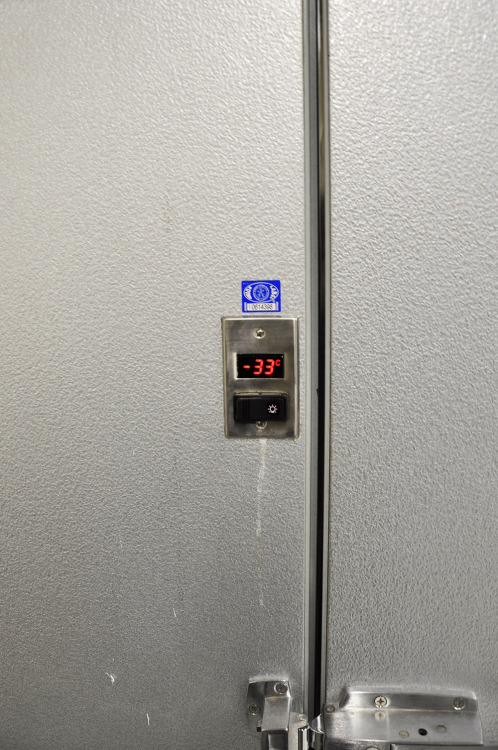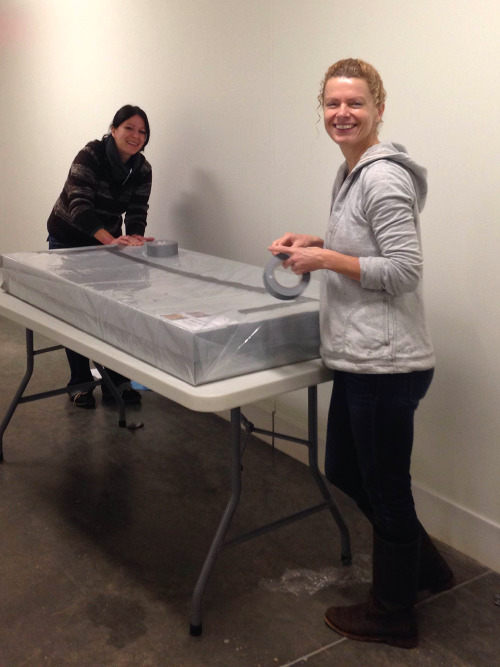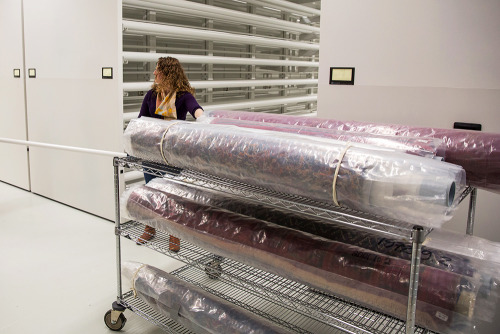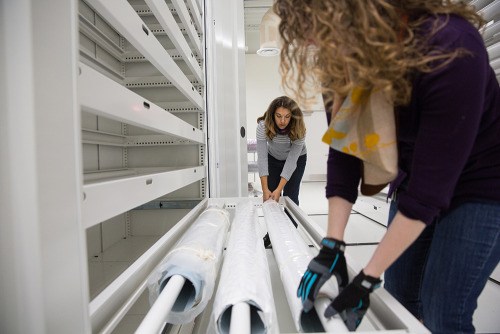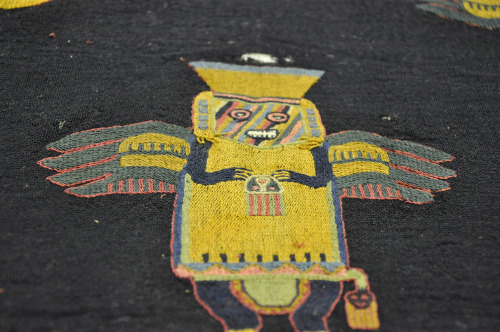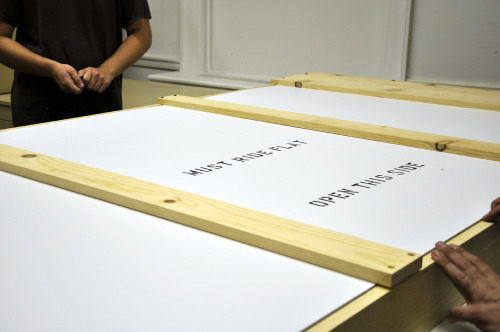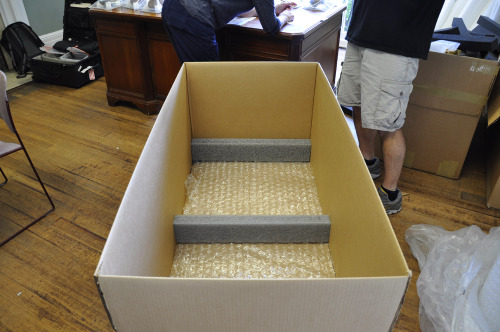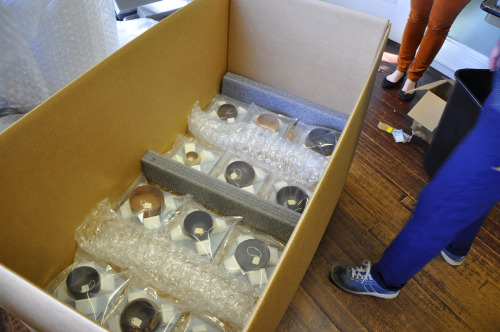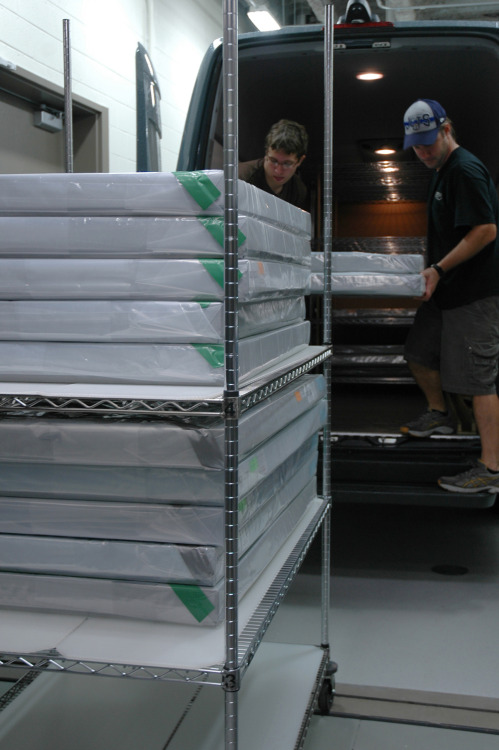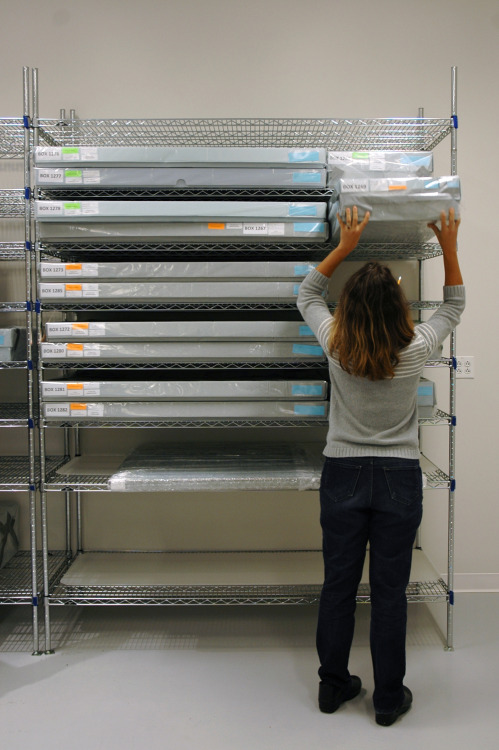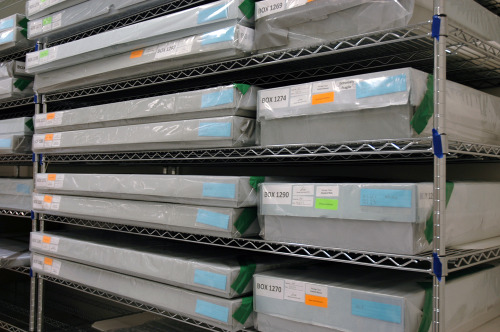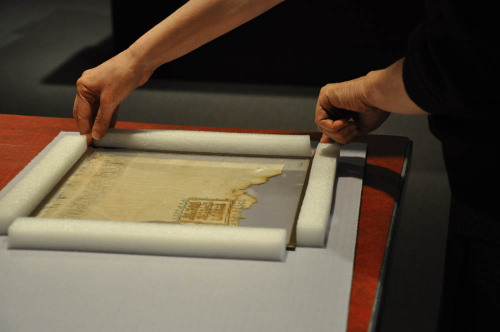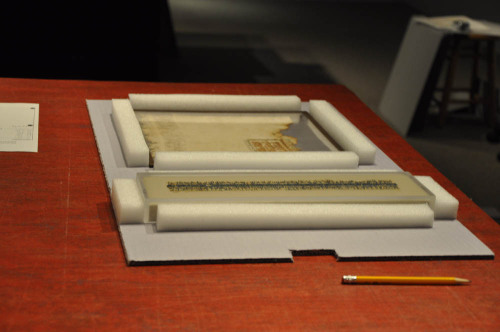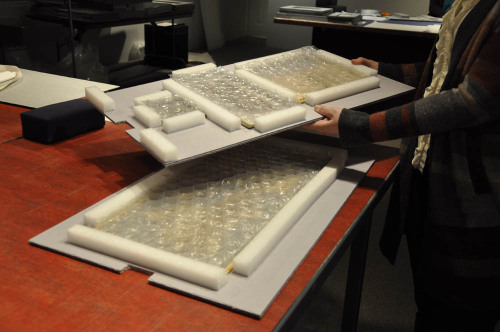#museum collections
March 3, 1887 - Helen Keller meets Anne Sullivan, her teacher and “miracle worker”
“On March 3, 1887, Anne Sullivan begins teaching six-year-old Helen Keller, who lost her sight and hearing after a severe illness at the age of 19 months. Under Sullivan’s tutelage, including her pioneering “touch teaching” techniques, the previously uncontrollable Keller flourished, eventually graduating from college and becoming an international lecturer and activist. Sullivan, later dubbed “the miracle worker,” remained Keller’s interpreter and constant companion until the older woman’s death in 1936.
Sullivan, born in Massachusetts in 1866, had firsthand experience with being handicapped: As a child, an infection impaired her vision. She then attended the Perkins Institution for the Blind where she learned the manual alphabet in order to communicate with a classmate who was deaf and blind. Eventually, Sullivan had several operations that improved her weakened eyesight.
Helen Adams Keller was born on June 27, 1880, to Arthur Keller, a former Confederate army officer and newspaper publisher, and his wife Kate, of Tuscumbia, Alabama. As a baby, a brief illness, possibly scarlet fever or a form of bacterial meningitis, left Helen unable to see, hear or speak. She was considered a bright but spoiled and strong-willed child. Her parents eventually sought the advice of Alexander Graham Bell, the inventor of the telephone and an authority on the deaf. He suggested the Kellers contact the Perkins Institution, which in turn recommended Anne Sullivan as a teacher.
Sullivan, age 20, arrived at Ivy Green, the Keller family estate, in 1887 and began working to socialize her wild, stubborn student and teach her by spelling out words in Keller’s hand. Initially, the finger spelling meant nothing to Keller. However, a breakthrough occurred one day when Sullivan held one of Keller’s hands under water from a pump and spelled out “w-a-t-e-r” in Keller’s palm. Keller went on to learn how to read, write and speak. With Sullivan’s assistance, Keller attended Radcliffe College and graduated with honors in 1904.
Helen Keller became a public speaker and author; her first book, “The Story of My Life” was published in 1902. She was also a fundraiser for the American Foundation for the Blind and an advocate for racial and sexual equality, as well as socialism. From 1920 to 1924, Sullivan and Keller even formed a vaudeville act to educate the public and earn money. Helen Keller died on June 1, 1968, at her home in Easton, Connecticut, at age 87, leaving her mark on the world by helping to alter perceptions about the disabled.”
This week in History:
February 28, 1861 - Congress creates Colorado Territory
March 1, 1961 - President Kennedy establishes the Peace Corps
March 2, 1836 - Texas declares independence
March 3, 1875 - First indoor game of ice hockey
March 4, 1918 - First cases reported in deadly Spanish Flu pandemic
March 5, 1963 - Hula Hoop patented
March 6, 1820 President Monroe signs the Missouri Compromise
Thisphotograph of Anne Sullivan Macy and Hellen Keller can be found in the online collection of the O. Winston Link Museum/History Museum of Western Virginia.
Post link
March 30, 1867 - U.S. Purchase of Alaska ridiculed as “Seward’s Folly”
“U.S. Secretary of State William H. Seward signs a treaty with Russia for the purchase of Alaska for $7 million. Despite the bargain price of roughly two cents an acre, the Alaskan purchase was ridiculed in Congress and in the press as “Seward’s Folly,” “Seward’s icebox,” and President Andrew Johnson’s “polar bear garden.”
The czarist government of Russia, which had established a presence in Alaska in the mid-18th century, first approached the United States about selling the territory during the administration of President James Buchanan, but negotiations were stalled by the outbreak of the Civil War. After 1865, Seward, a supporter of territorial expansion, was eager to acquire the tremendous landmass of Alaska, an area roughly one-fifth the size of the rest of the United States. He had some difficulty, however, making the case for the purchase of Alaska before the Senate, which ratified the treaty by a margin of just one vote on April 9, 1867.
Six months later, Alaska was formally handed over from Russia to the United States. Despite a slow start in U.S. settlement, the discovery of gold in 1898 brought a rapid influx of people to the territory, and Alaska, rich in natural resources, has contributed to American prosperity ever since.”
This week in History:
March 29, 1929 Herbert Hoover has telephone installed in Oval Office
March 30 1870 - 15th Amendment adopted
March 31, 1889 - Eiffel Tower opens
April 1, 1700 - April Fools’ tradition popularized
April 2, 1917 - Jeannette Rankin, first woman elected to US Congress, assumes office.
April 3, 1860 - Pony Express Debuts
April 4, 1968 - Martin Luther King, Jr. assassinated
This biography of William H. Seward can be found in the online collection of the Valdez Museum.
Post link
This Week in History:
January 6, 1838 - Samuel Morse demonstrates telegraph
“On this day in 1838, Samuel Morse’s telegraph system is demonstrated for the first time at the Speedwell Iron Works in Morristown, New Jersey. The telegraph, a device which used electric impulses to transmit encoded messages over a wire, would eventually revolutionize long-distance communication, reaching the height of its popularity in the 1920s and 1930s.
Samuel Finley Breese Morse was born April 27, 1791, in Charlestown, Massachusetts. He attended Yale University, where he was interested in art, as well as electricity, still in its infancy at the time. After college, Morse became a painter. In 1832, while sailing home from Europe, he heard about the newly discovered electromagnet and came up with an idea for an electric telegraph. He had no idea that other inventors were already at work on the concept.
Morse spent the next several years developing a prototype and took on two partners, Leonard Gale and Alfred Vail, to help him. In 1838, he demonstrated his invention using Morse code, in which dots and dashes represented letters and numbers. In 1843, Morse finally convinced a skeptical Congress to fund the construction of the first telegraph line in the United States, from Washington, D.C., to Baltimore. In May 1844, Morse sent the first official telegram over the line, with the message: “What hath God wrought!”
Over the next few years, private companies, using Morse’s patent, set up telegraph lines around the Northeast. In 1851, the New York and Mississippi Valley Printing Telegraph Company was founded; it would later change its name to Western Union. In 1861, Western Union finished the first transcontinental line across the United States. Five years later, the first successful permanent line across the Atlantic Ocean was constructed and by the end of the century telegraph systems were in place in Africa, Asia and Australia.
Because telegraph companies typically charged by the word, telegrams became known for their succinct prose–whether they contained happy or sad news. The word “stop,” which was free, was used in place of a period, for which there was a charge. In 1933, Western Union introduced singing telegrams. During World War II, Americans came to dread the sight of Western Union couriers because the military used telegrams to inform families about soldiers’ deaths.
Over the course of the 20th century, telegraph messages were largely replaced by cheap long-distance phone service, faxes and email. Western Union delivered its final telegram in January 2006.
Samuel Morse died wealthy and famous in New York City on April 2, 1872, at age 80.”
This week in History:
January 5, 1933 - Construction on Golden Gate Bridge begins
January 6, 1912 - New Mexico joins Union
January 7, 1927 - Harlem Globetrotters play their first game
January 8, 1946 - Elvis Presley receives first guitar
January 9, 1768 - First modern circus is staged
January 10, 1901 - Gusher signals start of U.S. oil industry
January 11, 1908 - Roosevelt makes Grand Canyon a national monument
This carte-de-visite of Samuel Morse and his telegraph can be found in the online collection of the Wisconsin Veterans Museum.
Post link


Natural History Museum by comewithkris.
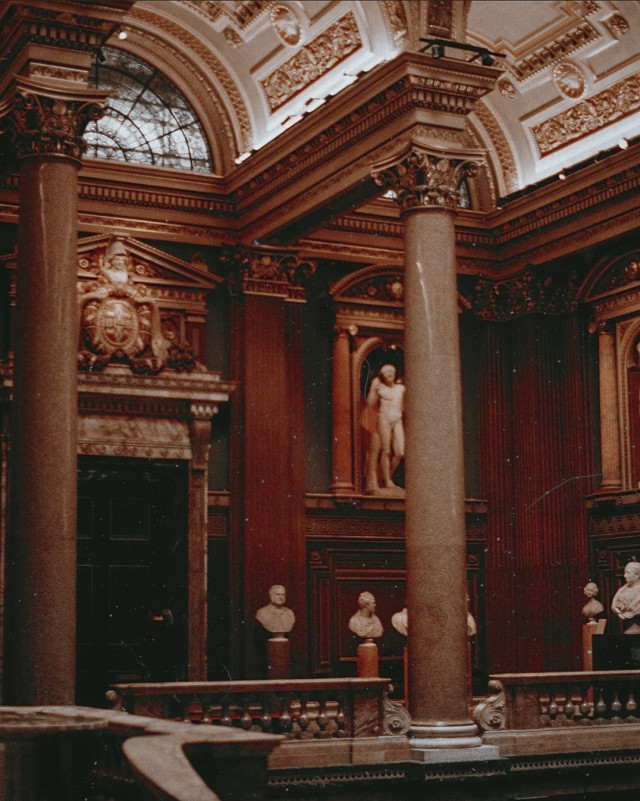

Fitzwilliam Museum by fieldnotesbyfi.


Hermitage Museum by dobrevyana.
Automaton in the form of a ship created by Hans Schlottheim of Augsburg in 1585. In the Kunstkammer Wien. The ship’s cannons actually fire! Click on the photo to see a video. Photo by Charles Reeza.
Post link
Diana Riding a Centaur - This is an automaton - a mechanical marvel created by Hans Jakob Bachmann of Augsburg from 1602-06. It is one of several automatons in the collection of the Kunsthistorisches Museum in Vienna. Click on the photo to see a video. Photo by Charles Reeza.
Post link
#FridayFeature of new accessions to the JMM collections: Plastic mug – sample of a prize given out to participants in a mental health survey at the 1989 Baltimore City Fair by Glass Mental Health Centers. Gift of Saralynn and Dr. Sheldon Glass, JMM 2020.6.5.
Post link
#DYK April 7 is World Health Day?
This photograph shows a doctor examining a patient at Levindale Hebrew Geriatric Center And Hospital in 1970. JMM 1997.134.554.
Post link
#FridayFeature of new accessions to the JMM collections: Letter of appreciation from the Equitable Trust Company, Baltimore, to Leonard Fruman, National Lumber Company, 1962.
The letter thanks Fruman for pointing out the bank’s failure to debit a check from the NLC account, and praises his “honesty, integrity, and cooperative spirit.”
Gift of National Lumber Company, JMM 2020.34.1.
Post link
#DYK March 26 is #WearAHat Day?
Wear a Hat Day was created to raise awareness for brain tumors. Here we see a magnificant early 20th century hat from Schleisner Co. department store worn by Sophie Frenkil Dopkin. JMM 1987.124.002.
Post link
#FridayFeature of new accessions to the JMM collections!
Cemetery deed: Fells Point Hebrew Friendship Congregation. Samuel Ullman paid $70 for “one quarter lot of land” in the cemetery, “thereon described as Lot No. 752 in Division 7, Section R, containing 160 square feet, more or less.” dated May 30, 1890; signed by Moses Moses, President, and M.L. Himmel, Secretary.
Gift of Pauletta Bratcher, JMM 2020.52.1.
Post link
#DYK March 10 is National No Smoking Day (in the UK)?
This sign once hung in the Ohr Knesseth Israel Sphard-Rogers Avenue Synagogue during a breif moment in history before indoor smoking was banned but in a time after people needed reminders not to light a fire on Shabbat.
A 1993 article in The Baltimore Sun says that when this synagogue merged with the Beth Jacob Synagogue, its objects went into the collection of the Jewish Historical Society. The example the arcticle gives is this very sign. Rogers Avenue Synagogue Collection, JMM 1993.052.074.
Post link
Artifact Road Trip - Massachusetts

Barns North Franklin, Mass.
By Lester Burbank Bridaham. This print was created for the Massachusetts Art Project, Federal Art Project, Works Progress Administration.
Find out more about this #ArtifactRoadTrip engraving on our Digital Artifact Collection: https://fdr.artifacts.archives.gov/objects/11504
Follow along each week as we feature a different artifact in our Museum Collection from each of the United States.

Visitors enjoyed a rare peek inside the museum’s Avenir Foundation Conservation and Collections Resource Center on a recent tour organized by the New Horizons Committee, a volunteer group dedicated to expanding the community of museum members and supporters. Collections management and conservation staff led the group around the facilities—including collections storage and processing rooms, the conservation lab, and a workroom dedicated to research and photography projects—and shared insights on their work.
Post link
Rolled textiles comprise approximately one third of The Textile Museum’s collections in storage, so it is no surprise that our staff are so excited for an amazing upgrade to the way the museum cares for these important pieces.
At the conservation and collections resource center, rolled textiles can now be stored suspended on rods within adjustable bottomless drawers inside of cabinets. This method of storage has many advantages:
- By suspending the rolls on rods rather than resting them on a surface, we reduce the amount of stress on these fragile pieces.
- The drawers can be adjusted for any spacing, so both thicker and thinner rolls can easily find a home. The flexibility of these cabinets helps us efficiently use the cabinet space.
- The depth of the drawers (32 inches) allows up to 8 rolls to be suspended per drawer.
- The height of the cabinets (9 feet) maximizes vertical space.
In these photos, Registrar Rachel Shabica and Associate Registrar Tessa Lummis adjust the spacing of a rolled textile storage cabinet—from its factory setting to a new configuration that is more conducive to fitting a variety of roll circumferences.
Shabica and Lummis unscrew all of the drawers from the gliders that let them slide in and out of the cabinet, and then unscrew the gliders from the cabinet walls. Next, the registrars remove the gliders from the walls and reset them in an even spacing, utilizing the full height of the cabinet. Finally, they replace the drawers onto the moveable portion of the gliders and screw them back in place.
Configuring cabinets is a lot of hard work, but we could not be happier to have this upgraded storage system!
Post link
Just in time for the Washington, D.C. area’s first cold snap of 2015, museum staff have turned on the walk-through freezer at the conservation and collections resource center for an inaugural object freezing!
Here Chief Conservator Esther Méthé and Associate Registrar Tessa Lummis wheel in sixty-three objects that are part of a travelling exhibition, and therefore were not frozen as part of the collections move.
Freezing textiles at a temperature of -30 degrees Celsius or below is an important element of the museum’s integrated pest management protocol. After a week of freezing, these objects will be brought to room temperature before they are unwrapped, inspected, and put away in storage.
Post link
Staff from across the museum recently gave registrars and conservators a hand with the next phase of the collections move—unpacking The Textile Museum’s 19,988 pieces and storing them in their new home.
From left to right:
- Associate Conservator Maria Fusco (left) and Exhibition Coordinator Monika Hirschbichler (right) wrap archival boxes containing museum objects in polyethylene to prepare them for freezing in our new walk-through freezer!
- Curator Lee Talbot unpacks rolled textiles that have already been frozen. Talbot is unsealing them and trimming the tubular polyethylene so that the rolls can be threaded onto rods and placed in new custom-built cabinets.
- Museum Director John Wetenhall helps Registrar Rachel Shabica configure these storage cabinets, which were specifically designed to house The Textile Museum’s collections of rolled objects.
Post link
The Collections Move Is Complete!
On November 11, museum staff oversaw the final delivery of The Textile Museum’s 19,988 collections pieces to the new conservation and collections resource center in Ashburn, Va. This monumental initiative began in January 2012 with a comprehensive survey of the collections. The effort continues as staff carefully unpack and place objects in new storage shelves and cabinets.
Congratulations to our dedicated staff and volunteers on this extraordinary achievement!
Post link
It really takes a team effort to safely pack some of the largest and most fragile objects in The Textile Museum’s collections. The Paracas mantle is one of these special pieces. Due to its delicate nature, it needed to travel flat (without being folded or rolled), which posed challenges for moving it through tight doorways.
Ely, Inc. art handler Chris Kirages addressed these challenges by creating a special crate which uses foam padding and gentle compression to protect the piece and prevent it from shifting, while allowing the crate to tilt through doorways when needed.
In the photos above, you can see art handlers and the museum’s conservation and collections staff removing the piece from an over-sized storage drawer and placing it on padding inside the crate. Art handlers removed the board by slowly pulling it away as others gently held the mantle in place. Once the piece was off of its storage board and inside the crate, it was covered in soft tissue sheets, and another board was placed on top. The crate was sealed by screwing slats across the top, thus creating the gentle compression that kept this Peruvian treasure safe in transit.
- Mantle, Peru, South Coast, Paracas style, ca. 600 BCE. Camelid fiber, 85 x 47 in. TM 91.192. Acquired by George Hewitt Myers in 1940.
Post link
Ely, Inc. art handler Chris Kirages recently packed The Textile Museum’s small collection of ceramics for safe transit to the museum’s new conservation and collections resource center.
First, Kirages used archival blue board, Ethafoam, and Volara to create individual mounts for each ceramic piece that will both protect these pieces during travel and permanently stabilize them in collections storage.
Next, he lined a large bin box with cushioning and foam bumpers. The ceramic mounts were placed between the bumpers in a single layer, with additional cushioning between and on top. The foam bumpers allowed Kirages to safely create multiple layers of ceramics in a single large box.
Post link
A total of 118 collections pieces that will be featured in The Textile Museum’s first exhibitions at its new location—Unraveling Identity: Our Textiles, Our Stories and China: Through the Lens of John Thomson (1968-1872)—have been safely transported to the Foggy Bottom museum, to undergo final conservation treatment and preparation for display.
Post link
Chief Conservator Esther Méthé is working on packing our small collection of textile fragments that are encased in glass. Méthé is creating bumper trays for these fragile pieces and covering them with bubble, to ensure they are cushioned for transit.
Post link







